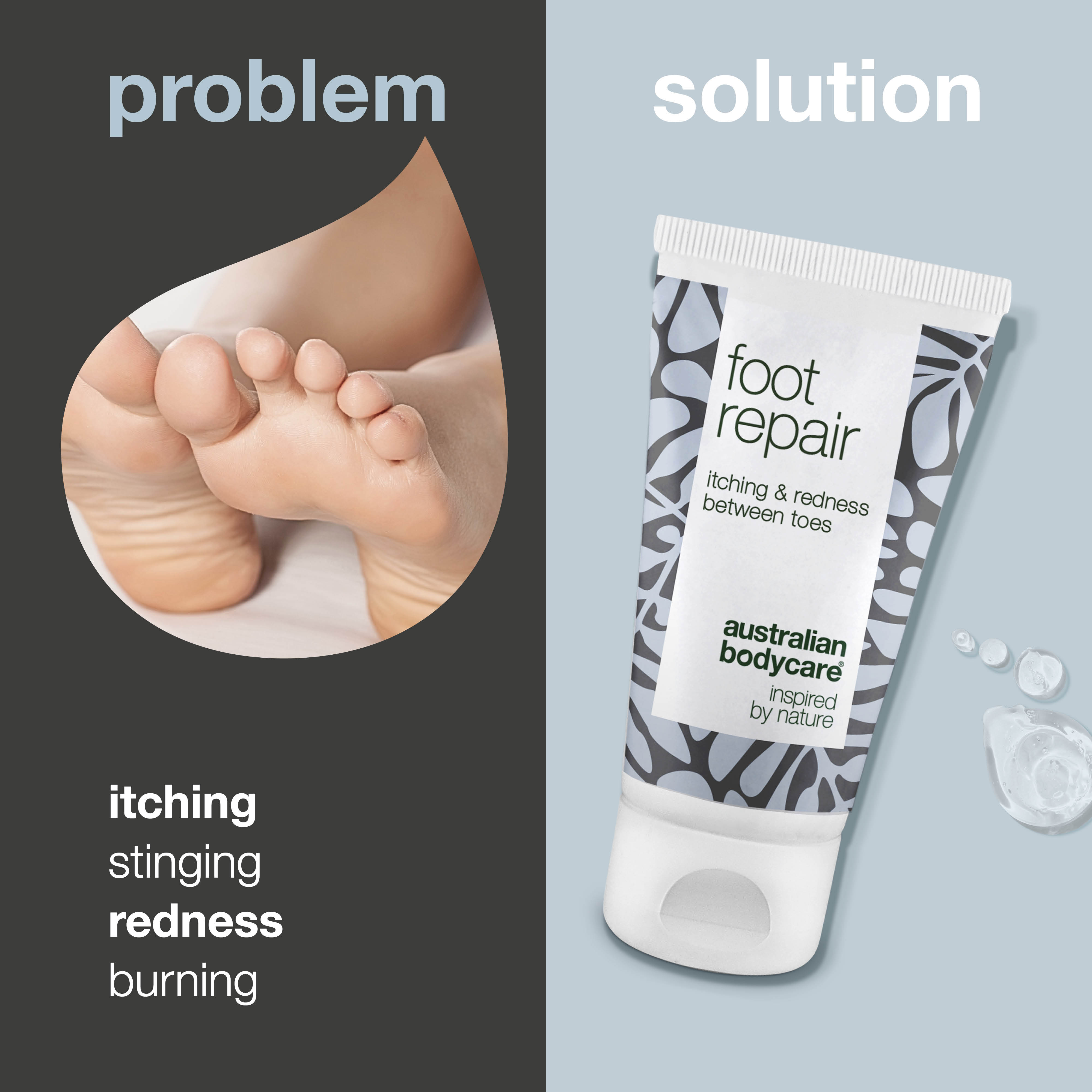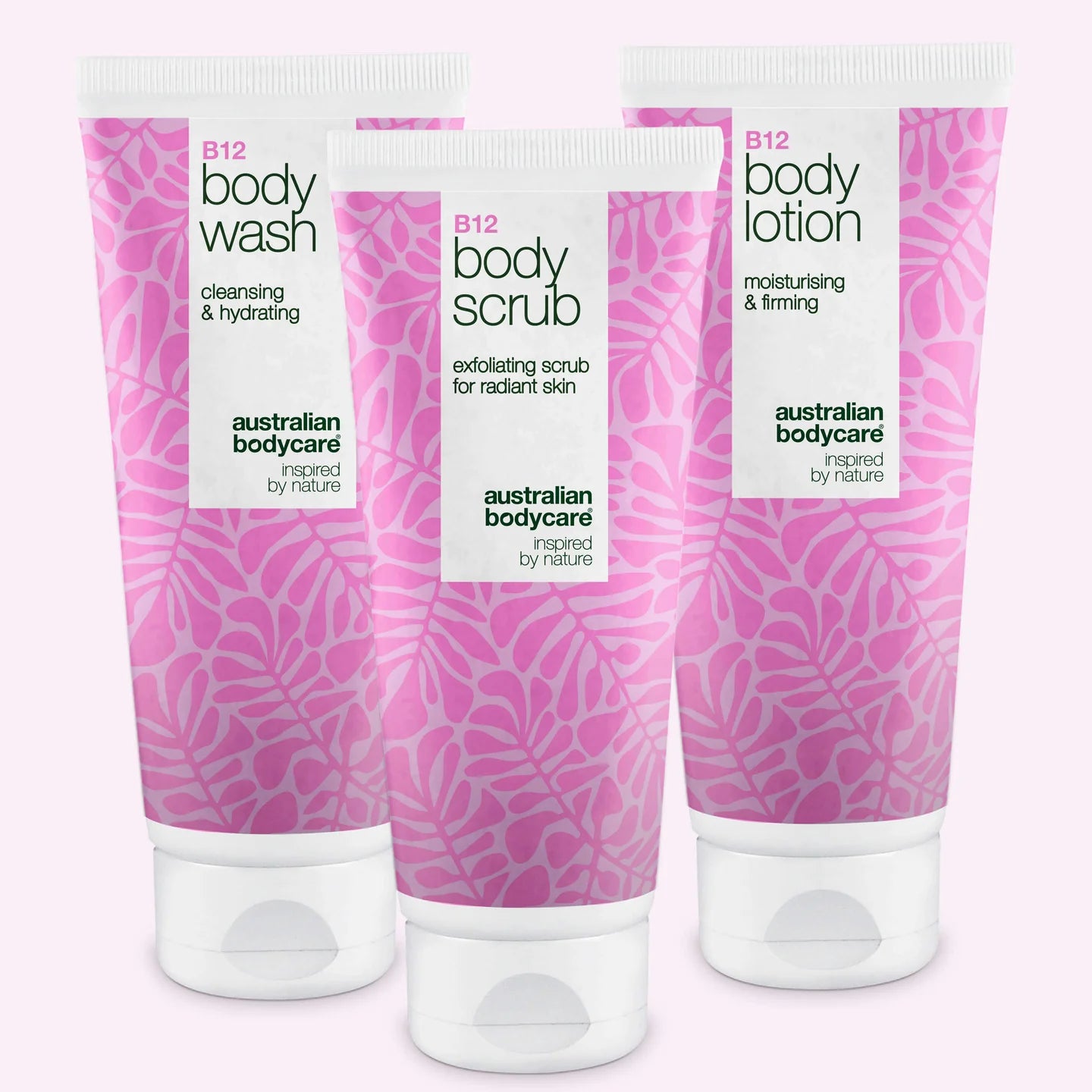Anyone can get athlete’s foot – but how should you treat it?
Athlete’s foot is the commonest fungal infection. It is felt as itching and a rash on the toes and the rest of the foot. Athlete’s foot is quite contagious – to other people and other parts of the body – so it is important to treat it quickly.
Table of contents
What is athlete’s foot – and who is affected?
Athlete’s foot is a very widespread fungal infection – in fact the commonest of all. A fungal infection between the toes is especially common among young people and adults, but is rare in children. Sportspeople and others whose feet are frequently enclosed in tight-fitting and non-breathable footwear are extra vulnerable to athlete’s foot. That is in fact where the name comes from, although sportspeople are not the only ones to get athlete’s foot.
It is also called tinea pedis, and typically attacks the skin between the outer toes (the little toe and the next one). From there it can spread to the skin between the other toes, the toenails, and possibly further up the foot.
READ THIS TOO: Treatment for athlete’s foot
Marie from Australian Bodycare tells you here what you can do about stinging and itching between the toes.
Itching and rash
You will probably discover athlete’s foot as a very irritating itch, that simply will not stop. You will also see a red, slightly scaly rash between your toes. There may also be small, watery blisters.
Athlete’s foot is easily passed on, so it is important to start treatment as soon as you discover it. Then you have a chance of limiting the infection – both to other parts of the body and to other people.
Read this too: How to treat corns
What does athlete’s foot look like – and what does it feel like?
Athlete’s foot is normally well hidden between the toes. It usually starts in the skin between the two outer toes, and from there it can spread to the other toes, the nails and over the foot.
You will normally discover it when it suddenly begins to itch, sting and burn between your toes. It is a constant itching and burning sensation that is not easy to ignore. Then the itch tends to get worse if you do not do anything about the athlete’s foot.
When you take a look, you will probably discover that the skin between the toes is slightly red and scaly. Later, small, watery blisters may appear, which also sting and itch. Athlete’s foot may also give rise to cheesy feet with an unpleasant smell.
Moccasin-type athlete’s foot
If the soles of your feet sting, itch and burn, and you see very dry skin under the soles and up the sides of your feet, you may have a different type of foot fungus. This is a rare fungus known as moccasin-type athlete's foot, which affects the whole of the foot.
It looks as if you have gym shoes or moccasins on your feet, and the ridges in the skin are clearly marked. If you do not get treatment for moccasin-type athlete's foot, it can progress to a thick crust formation that resembles eczema. You may also have a similar rash on the palms of your hands.
See a doctor if you have a foot fungus
The best thing to do if you have symptoms of athlete’s foot (of either type) is to see a doctor, who will soon be able to make a diagnosis, because athlete’s foot is a common complaint, which doctors meet often. It is important to get treatment quickly, so that you do not pass on the infection to others or to other parts of your own body.
If the doctor is not certain, it may be necessary to take a little skin scraping, which will be sent for cultivation and testing. A skin scraping is painless, and only takes a moment. It may take a couple of weeks, however, before you get the results of the test, because the fungus has to be cultivated, and that takes time.
Why do people get athlete’s foot?
Athlete’s foot is caused by an infection with skin fungi, also known as dermatophytes. They are a type of fungus that everyone has, just as we have many other fungi and bacteria in the body and on the skin. This fungus is normally harmless. It lives on dead skin cells and does not cause damage. It is only when conditions for fungal growth suddenly become far too favourable that the fungi begin to reproduce faster than usual, and then attack skin or nails.
The fungi penetrate into the outer layer of skin, causing the skin to form more cells than usual. When these cells are pushed up to the surface, the skin becomes thick and scaly. A red edge can often be seen between the normal skin and the diseased skin. The clear boundary between affected and the normal skin is often seen with fungal infections of the skin generally, also in other places besides the feet.
Warm, damp conditions
The fungi thrive best in warm, damp conditions, so if your feet are too warm and damp, they provide ideal conditions for the fungi to live and spread too much.
Athlete’s foot is quite contagious, so you may have caught it from others. But you can also develop athlete’s foot without being infected by anyone else. If your feet are closely confined in a warm, damp environment for most of the time, you give the fungi ideal conditions to thrive and reproduce.
How can I treat athlete’s foot?
Fortunately, athlete’s foot is a quite harmless condition, which is easy to treat. Good and effective treatments are available. The most important thing if you have athlete’s foot is not to ignore it – which is probably difficult, because of the very uncomfortable itch.
If the attack is not severe, you may be lucky, and your athlete’s foot may clear up by itself if your feet get lots of fresh air. However, if you do not treat athlete’s foot, you also run the risk that it will get worse. So the question is: do you really dare to wait and see if it clears up without treatment?
Itching and stinging between the toes is a problem for many people. Here Sofie from Australian Bodycare tells you what you can do about it.
Treatment is important
Without treatment, you risk passing athlete’s foot on to others. You also risk athlete’s foot spreading to other parts of the body. It can spread to the nails, so that you also get nail fungus, and that is far more difficult to get rid of than athlete’s foot. So see the doctor immediately if you suspect you have a fungus between your toes or on your feet.
READ MORE: How to get rid nail fungus
If you ignore athlete’s foot, you risk not only that it can spread and pass on the infection, but also that the bacteria can gain access through small cracks and breaks in the skin caused by athlete’s foot. If bacteria penetrate through the skin, you risk an infection such as erysipelas. Then a fungicidal treatment will not be sufficient, and you may need a course of antibiotics.
In general, there are several different ways of treating athlete’s foot. A doctor will as a rule suggest cream or ointment or a course of tablets. There are also alternative treatments, including natural remedies, pickling preservative (Atamon) and various household remedies.
Cream or ointment for athlete’s foot
In most cases a doctor will prescribe a fungicidal cream or ointment that kills the fungus. It must be applied locally on the area once or twice a day for some weeks in total. In most cases this will be an effective cure for athlete’s foot, and only in very rare cases will there be any adverse reaction. Even though the symptoms have cleared up, it is important to continue the treatment for the entire period. Otherwise there may be a risk that the athlete’s foot is still there, and will quickly flare up again.
Treatment with tablets
If you have a severe attack of athlete’s foot, or if the cream or ointment simply does not work for you, the doctor may prescribe a course of tablets. If you have an infection in cracks or sores, an additional course of antibiotics may be necessary to deal with the infection.
Natural treatments
There are several different natural remedies that are antibacterial and kind to skin at the same time. Among other things, there are natural remedies containing Tea Tree Oil, camomile oil, aloe vera or lavender. In some countries, Tea Tree Oil is acknowledged as a natural remedy for treating athlete’s foot.
Dab natural remedies onto the skin, where they are antibacterial and also relieve itching and stinging. You can find the various natural remedies in drugstores and health food shops.
Over-the-counter products
You can find a variety of treatments for athlete’s foot. In most cases they can cure your athlete’s foot. It is very important, however, that you continue for the whole of the treatment period, even if your symptoms are disappearing. Otherwise you risk a new flare-up of athlete’s foot.
If you have not had athlete’s foot before, it may be a good idea to let your doctor look at it, so you are certain that it is athlete’s foot. Then if you get it again, it may be enough to go to the pharmacy and buy an over-the-counter treatment next time.
How is athlete’s foot passed on?
Athlete’s foot is passed on when skin sheds scale. That is why the risk of infection is greatest if you walk around barefoot in places where others also go barefoot. Typical examples are the shower-rooms at swimming baths, gyms and sports halls. But of course, it might be an outdoor swimming pool or a hotel room.
We all shed dead skin, which cannot be seen with the naked eye. But the tiny flakes are there, on floors, in carpets, on bed sheets, in socks and shoes. So if you go barefoot where someone with athlete’s foot has also walked around with bare feet, you risk getting infected.
The best you can do is to remember to wear shower sandals when you use public bathrooms and showers. Or generally, if you go about with bare feet where other people often go with bare feet too.
Since athlete’s foot is very contagious, you can easily be infected by others. Once you have caught athlete’s foot, you can easily pass it on to others, too.
Even if you do go where there is a risk of athlete’s foot, it is not certain that you will be infected – even if others are. We are not all equally receptive to fungal spores, and two people will not necessarily react in the same way, even to the same infection.
Athlete’s foot and nail fungus
It is not far from athlete’s foot between the toes and on the feet to the toenails. Untreated athlete’s foot can soon spread, therefore, to the nails and cause nail fungus. On the other hand, the infection rarely goes the other way, since nail fungus is far less contagious than athlete’s foot. Nail fungus is far more difficult to get rid of than athlete’s foot, so make sure to get rid of your athlete’s foot before it spreads to anything worse.
Nail fungus often comes from athlete’s foot that either was not discovered, or was ignored for to long.
READ THIS TOO: How can I treat nail fungus?
What can you do yourself to prevent athlete’s foot?
It is important to treat athlete’s foot if you have caught it. However, it is at least as important to prevent athlete’s foot altogether.
Cleanliness and good hygiene are important in preventing athlete’s foot, but even if you are careful about hygiene, you can still catch athlete’s foot, because it is so contagious. However, you can minimise the risk by observing some simple rules and precautions.
Good advice to prevent athlete’s foot:
- Make sure you dry your feet well, especially between the toes, after you take a bath.
- Change your shoes frequently.
- If possible, replace footwear in artificial materials with leather footwear, which allows your skin to breathe better.
- Let your feet get some fresh air as often as possible – wear sandals whenever you can.
- Change your socks every day – and replace synthetic socks with woollen or cotton socks.
- Always keep your feet clean and dry.
- Wash socks, bed linen, towels and other items at a temperature of at least 60 degrees C, or the fungal spores will not be killed.
- If you have athlete’s foot, dry your feet last – and then put the towel in the laundry basket.
FAQ about athlete’s foot
What does athlete’s foot look like?
Athlete’s foot is first felt as itching, stinging and a burning sensation in the skin between the toes, which will often become red and slightly scaly. Watery blisters may also appear.
What is athlete’s foot?
Athlete’s foot is a very common fungal infection, which attacks the skin between the toes. It normally starts between the outer toes (the little toe and the next one), and from there it spreads to the other toes and possibly to the rest of the foot.
What causes athlete’s foot?
Athlete’s foot is caused by an infection with skin fungi, also known as dermatophytes. It is a type of fungus, which we all have on our bodies, and which is normally harmless. It is only when conditions for fungus growth suddenly become far too favourable (warm and damp) that the fungi begin to reproduce faster than usual, and will then attack skin or nails.
How long is athlete’s foot contagious?
Athlete’s foot is contagious as long as you have it. That is why you must get it treated as soon as possible, so that you do not pass it on to others – or infect other parts of your body, such as the toenails, where you can also get nail fungus.
Can you use pickling preservative – Atamon – to combat athlete’s foot?
Atamon is used to preserve foods and drinks, to inhibit the growth of yeasts and moulds. It is used in jams among other things. Some people have therefore thought it might be an obvious remedy to use against athlete’s foot. Medical science states, however, that Atamon is not effective against dermatophytes, the types of fungi that cause athlete’s foot.
How should you treat athlete’s foot?
There are various ways of treating athlete’s foot. The most usual, which a doctor will normally recommend, is a fungicidal cream or ointment, and possibly a course of tablets.
With athlete’s foot there is often itching and peeling skin, and then natural remedies containing Tea Tree Oil may be a great help.
Does athlete’s foot clear up by itself?
You may be lucky, and find that giving your feet lots of fresh air can cure your athlete’s foot. You also risk that the infection will spread on yourself or to others if you do nothing about it. So the best advice is to treat it quickly.
Can athlete’s foot spread to other parts of the body?
Athlete’s foot is very contagious, so you can easily spread it to other parts of the body. Probably the greatest risk is that it will spread to the toenails and become nail fungus.
If you have any further questions on this subject, we recommend that you contact your doctor.





